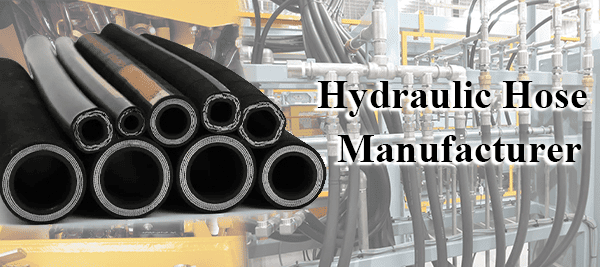Choosing the right liner and reinforcement for silicone hoses is critical to optimize performance in automotive manufacturing and other industrial applications. The right combination of liner and reinforcement can significantly impact the durability, resistencia química, and temperature tolerance of silicone hoses, which ultimately affects the safety and efficiency of your operations. This guide will explore the various options available and the benefits of each, so you can make informed decisions for your specific needs.
Overview of Best Silicone Hose Liner and Reinforcement Options
Silicone hose liners are available in different types, such as Fluorosilicone, PTFE, and FKM, each offering unique benefits in terms of temperature resistance, chemical compatibility, y resistencia a la presión. There are also reinforcement options like Polyester, Aramida, and Stainless Steel Wire that further enhance hose performance, catering to various applications in the automotive, químico, and industrial sectors. Choosing the right combination ensures the hose works well and lasts a long time.
Understanding the Different Options:
Knowing the different liner and reinforcement options for silicone hoses can help you pick the best one for your needs. Let’s look at each option in more detail.
Common Queries About Silicone Hoses
¿Cuáles son las desventajas de las mangueras de silicona??
Mangueras de silicona, like everything else, have their pros and cons. Silicone hoses are more expensive than rubber hoses. They are not always the best choice if you are going to be using them in a situation where they are going to be exposed to abrasive chemicals or abrasive environments where they are going to get beat up. Silicone is harder, so there is a greater chance that it will kink if it is not properly reinforced, especially in certain setups.
Que es mejor, EPDM or Silicone Coolant Hose?
When comparing EPDM hoses to silicone hoses, silicone hoses win hands down when it comes to temperature resistance. EPDM hoses can handle temperatures up to 130°C (266° F), while silicone hoses can handle temperatures up to 230°C (446° F) y, in some special high-temperature grades, up to 270°C (518° F). This makes silicone hoses perfect for high-heat applications like turbocharger systems and performance vehicles where extended exposure to extreme temperatures is a reality.
Are Silicone Hoses Worth It?
Yup, silicone hoses are worth the money, especially if you need something that is going to last a long time, be flexible, and handle extreme conditions. Silicone hoses are way more flexible than rubber hoses, and they stay that way over time, which means they’re less likely to split, endurecer, o pudrición seca. Because of that, they’re a good investment for both automotive and industrial applications.
Do Silicone Hoses Last Longer?
Silicone hoses last longer than rubber hoses. They resist UV rays, ozono, and high temperatures that cause rubber hoses to break down. En aplicaciones automotrices, silicone hoses can outlast the life of the vehicle, reducing the need for replacements.
Types of Silicone Hose Liners: Fluorosilicona, PTFE, Fkm, etc..
1. Polyester Reinforcement: Polyester is commonly used for general-purpose silicone hoses, providing a cost-effective option for coolant and heater hose applications.
- Rango de temperatura: Up to +180°C (+356° F).
- Best Applications: Coolant and heater hoses in automotive and industrial systems.
- Ventajas: Cost-effective, flexible, and moderate pressure resistance.
2. Refuerzo de aramida: Fibras de aramida, like Kevlar, are used for high-temperature and high-pressure applications because they don’t melt or get soft.
- Rango de temperatura: Up to +500°F (+260° C).
- Best Applications: Turbocharger systems, vehículos de alto rendimiento, y aplicaciones de carreras.
- Ventajas: High burst strength, great abrasion resistance, and superior heat resistance.
3. Stainless Steel Wire Reinforcement: The stainless steel wire gives the hose structural support and prevents it from collapsing under vacuum, so it’s great for heavy-duty applications.
- Rango de temperatura: Hasta +260 ° C (+500° F).
- Best Applications: Suction applications, high-pressure applications, and automotive applications.
- Ventajas: Very high pressure resistance and it holds up under mechanical stress.
4. Nomex® Reinforcement: Nomex® is the stuff that doesn’t burn and is used in places where things get hot and you don’t want them to catch on fire.
- Rango de temperatura: Hasta +260 ° C (+500° F).
- Best Applications: Portavoz, aviación, and other high-performance stuff.
- Ventajas: It doesn’t burn, can handle high temperatures, and can take a beating.
5. Applications in Different Industries: Automotor, Aeroespacial, Industrial, etc..
- Automotor: Silicone hoses are great for coolant, heater, turbo, and fuel systems because they can handle high temps and won’t break down from chemicals.
- Aeroespacial: In aviation, we use high-performance silicone hoses with PTFE or FKM liners and stainless steel reinforcements for hydraulic systems, líneas de combustible, and high-temperature ducts.
- Industrial: In chemical processing and food industries, we like silicone hoses with PTFE liners because they’re non-stick and won’t get eaten up by nasty chemicals.
Key Considerations for Choosing the Right Silicone Hose Liner
- Temperatura: Choose a liner that can handle the temperature of the application.
- Químico: Think about what chemicals or fluids will be going through the hose.
- Pressure and Mechanical: Get a hose that has the right reinforcement to give you the strength and flexibility you need.
- Regulatory: Make sure the materials are compliant with the standards for your specific industry, especially food, farmacéutico, y automotriz.
Comparación con otros materiales: Goma, EPDM, etc..
While rubber and EPDM hoses are cheaper, they don’t have the same temperature resistance, flexibilidad, or chemical compatibility as silicone hoses. Silicone hoses offer better durability and performance, especially in applications where long-term reliability is important.
Conclusión
Choosing the right silicone hose liner and reinforcement is key to making sure you get the best performance for automotive and industrial applications. Knowing the different specifications, temperature ranges, resistencia química, and pressure capabilities for each option will help you make the right choice for your needs, so you can be both safe and efficient.



